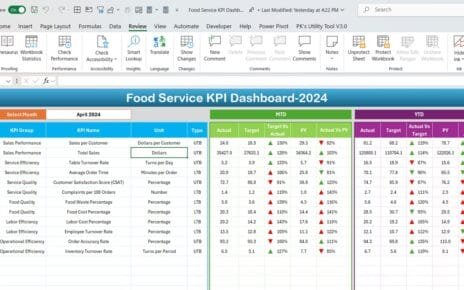In today’s energy-driven world, organizations that deal with renewable energy or battery storage systems must track their performance closely. To make informed decisions and reach goals faster, companies need a tool that gives them insights at a glance. That’s where an Energy Storage KPI Dashboard in Excel becomes incredibly valuable.
This comprehensive guide walks you through the purpose, structure, advantages, and best practices for using an Energy Storage KPI Dashboard in Excel. Whether you’re an analyst, project manager, or executive, this article will help you better understand how to manage energy data with precision.
What is an Energy Storage KPI Dashboard in Excel?
An Energy Storage KPI Dashboard in Excel is a dynamic, ready-to-use tool designed to monitor, evaluate, and visualize key performance indicators related to energy storage. These KPIs typically include metrics such as storage capacity utilization, efficiency rates, charge/discharge cycles, and energy losses.
This dashboard simplifies how you capture actual, target, and historical data. Even better, it presents all this information visually through charts, comparison indicators, and drop-down selections for better interaction.
Click to Purchase Energy Storage KPI Dashboard in Excel
Worksheets Included in the Dashboard
Let’s take a look at the 7 worksheets that make this dashboard robust and user-friendly:
Home Sheet
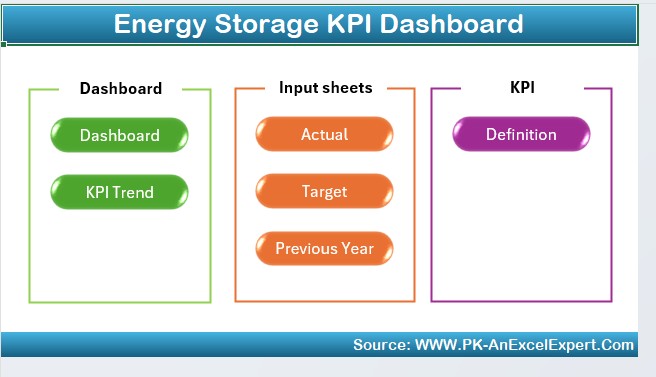
- Acts as the index page of your dashboard.
- Includes 6 buttons that help you navigate to respective sheets instantly.
- Ideal for first-time users who want a quick, intuitive way to explore the dashboard.
Dashboard Sheet Tab
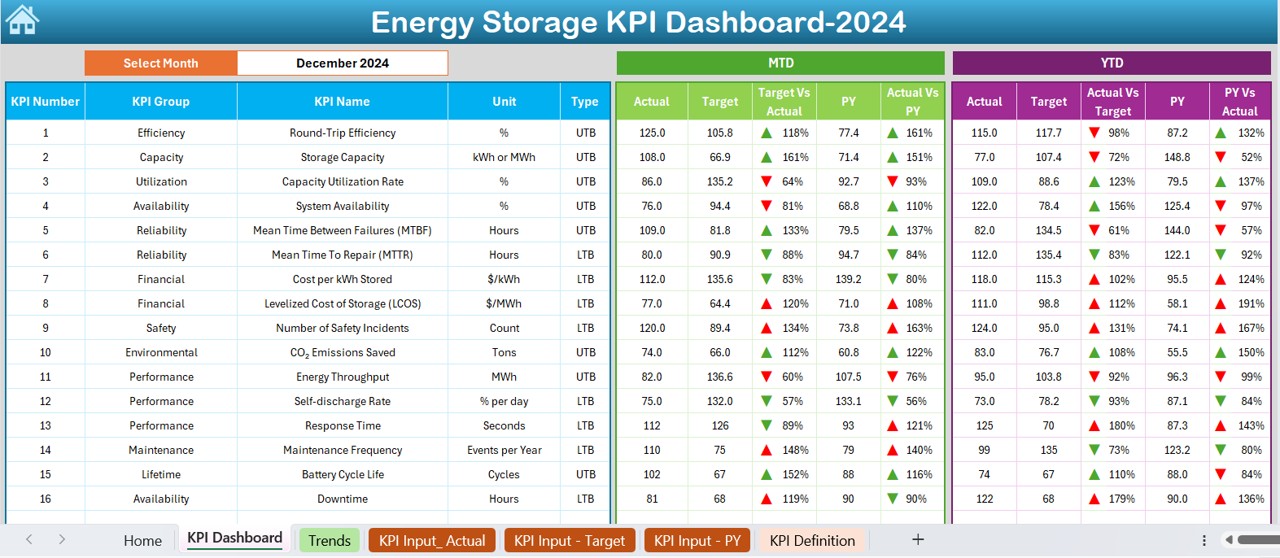
- This is the heart of the template.
- Select the month using the drop-down in cell D3. This selection dynamically updates the entire dashboard.
Shows:
- MTD (Month-To-Date) Actual, Target, and Previous Year Data.
- YTD (Year-To-Date) Actual, Target, and Previous Year Data.
- Visuals include up/down arrows for quick variance analysis (Actual vs Target, Actual vs PY).
- Conditional formatting highlights performance trends visually.
KPI Trend Sheet Tab
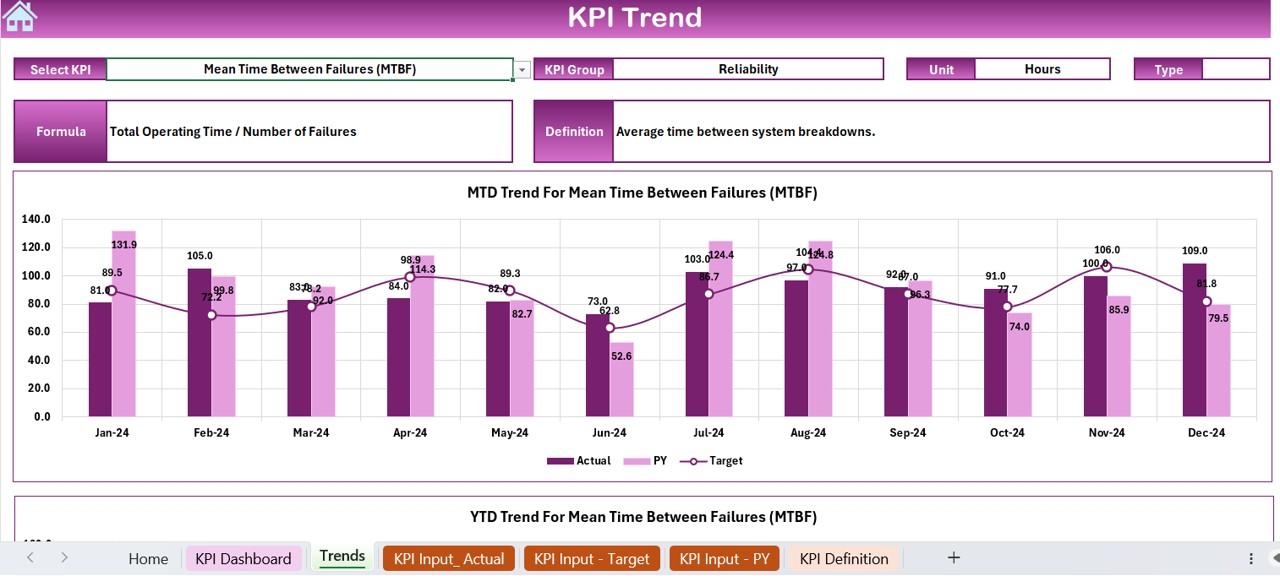
Offers an in-depth look at individual KPIs.
- Select a KPI from cell C3 to view:
- KPI Group
- KPI Unit
- KPI Type (“Lower the Better” or “Upper the Better”)
- KPI Formula
- KPI Definition
- Displays MTD and YTD trend charts for Target, Actual, and Previous Year values.
Actual Numbers Input Sheet

- This is your data-entry zone.
- Select the starting month from cell E1.
- Input the MTD and YTD actual numbers for the selected month.
Target Sheet Tab
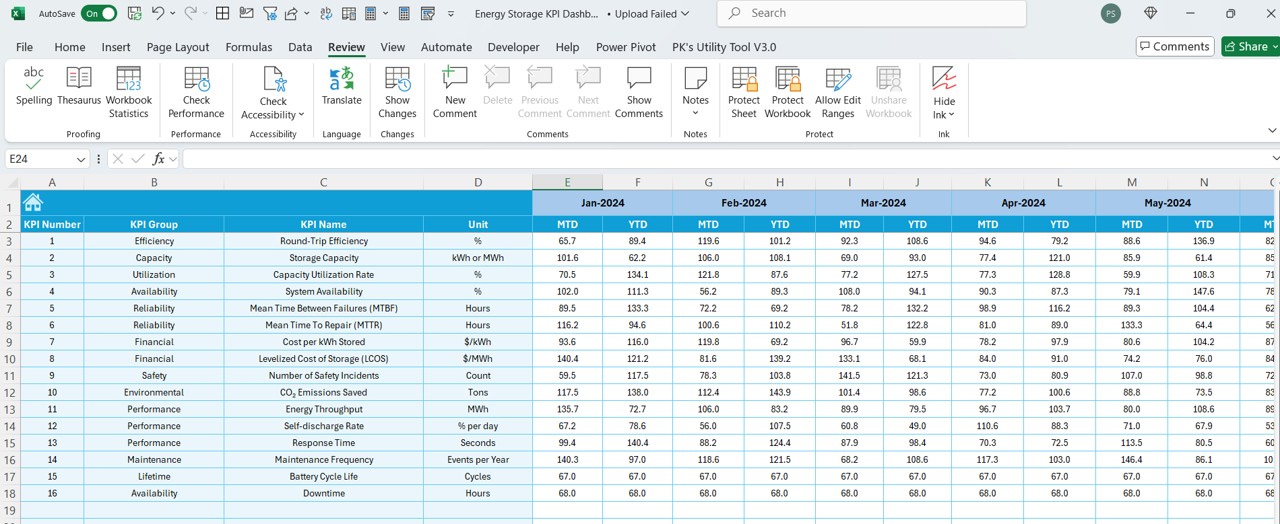
Click to Purchase Energy Storage KPI Dashboard in Excel
- Record monthly and yearly target values for each KPI.
- Ensure consistent benchmarking throughout the dashboard.
Previous Year Number Sheet
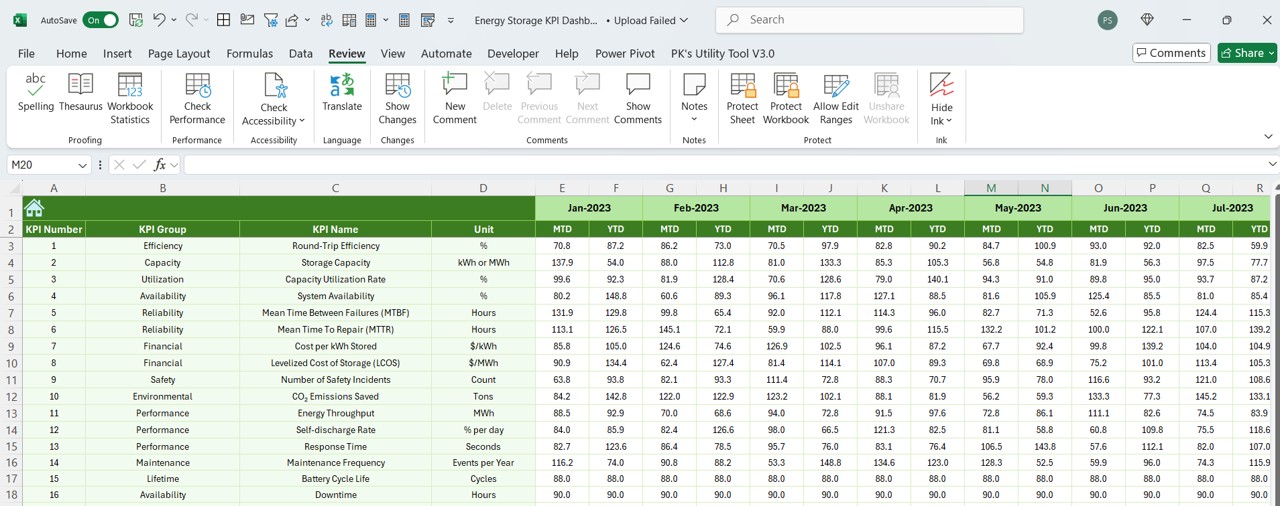
- Enter last year’s KPI data in a similar format to maintain consistency.
- This helps in accurate year-over-year performance comparisons.
KPI Definition Sheet
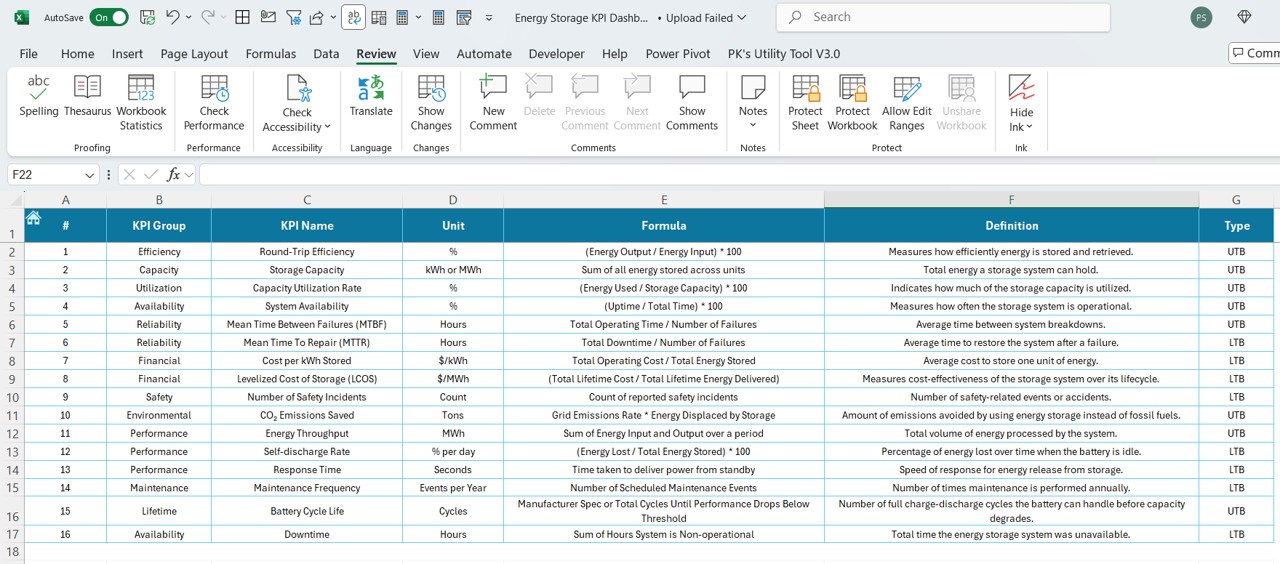
- Define every KPI clearly by specifying:
- KPI Name
- KPI Group
- Unit
- Formula
- Definition
Advantages of Using an Energy Storage KPI Dashboard in Excel
✅ Centralized Tracking: This dashboard brings all your important energy KPIs into one place, so you don’t need to hop between multiple sheets or software tools.
✅ Better Decision-Making: With real-time comparisons and visual indicators, it becomes easier to identify issues and act on them without delay.
✅ Time-Saving: Instead of manually calculating KPIs every month, use pre-built formulas and visuals to save hours.
✅ Year-over-Year Comparison: Compare actual values with past years seamlessly, which supports long-term planning and performance reviews.
✅ Easy Customization: Because it’s in Excel, you can easily customize the layout, colors, KPIs, or formulas based on your organization’s specific requirements.
📈 Best Practices for the Energy Storage KPI Dashboard
✉️ Keep KPI Definitions Clear: Use the KPI Definition Sheet wisely. Every stakeholder should understand what each KPI measures.
✉️ Enter Accurate Data: Ensure the Actual, Target, and PY data are entered correctly in their respective sheets. A small error can mislead decision-makers.
✉️ Update Monthly: At the beginning of each month, update the new actual numbers, targets, and comparisons to keep your dashboard relevant.
✉️ Use the Drop-down Filters: Always use the drop-down selectors provided in Dashboard and KPI Trend sheets to interact with the data.
✉️ Visualize Trends: Pay attention to up/down arrows and charts to track ongoing performance trends quickly.
✉️ Keep It Simple: Don’t overload the dashboard with too many KPIs. Focus only on critical metrics that matter.
✅ Conclusion:
Why Excel is Ideal for Energy Storage KPIs
While many organizations turn to high-end software for data analytics, Excel remains a flexible, affordable, and powerful solution. When it comes to monitoring Energy Storage KPIs, this dashboard provides a structured, interactive, and insightful way to track performance. Its 7-sheet layout ensures that every part of your KPI workflow—from data input to final visualization—is covered efficiently.
So, if you’re aiming to improve your energy storage operations, implementing this dashboard is one of the smartest moves you can make.
📃 Frequently Asked Questions (FAQs)
Can I add more KPIs to the dashboard?
Yes! You can easily add more KPIs by updating the KPI Definition, Actual, Target, and Previous Year sheets.
Is this dashboard suitable for non-technical users?
Absolutely. The buttons, drop-downs, and conditional formatting make it easy to navigate, even for those without Excel expertise.
How often should I update the dashboard?
Ideally, update it monthly to keep your data accurate and up-to-date.
Can I use this dashboard for other energy systems like solar or wind?
Yes, you can customize the KPIs and definitions to suit any energy-related project.
Does the dashboard support multiple years of data?
Yes, you can expand the input sheets to include multiple years if needed.
Can I track both operational and financial KPIs?
Definitely. Just ensure you clearly define each KPI and enter consistent data in the related sheets.
Click to Purchase Energy Storage KPI Dashboard in Excel
Visit our YouTube channel to learn step-by-step video tutorials


